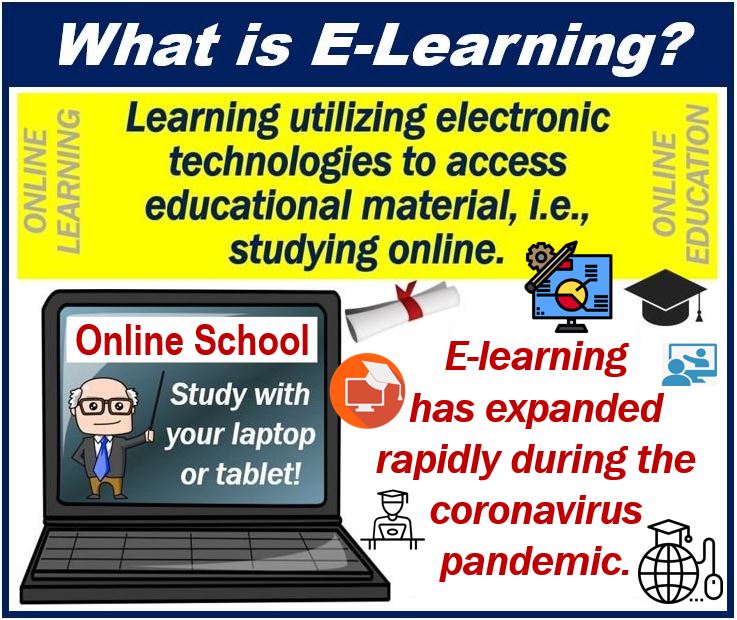When life gives you lemons, you make lemonade.
Administrative systems are some of the most resilient structures that humankind can implement. If a system does not meet with a crisis or catastrophic failure, it tends not to change. There is something to be said about this resilience. Still, the methods of education have remained virtually untouched for hundreds of years.

The internet has provided us with the greatest revolution in information since the invention of the printing press. It comes as a surprise to almost everyone involved that its impact on education has remained minimal. Of course, there were marginal benefits for students. For example, pupils can outsource some of their most tedious tasks by searching for a good essay writing service or communicating with students from other countries.
The COVID pandemic seems to have forced educators to rethink everything and learn lessons that can be implemented even after the crisis has ended. It is brought by dire circumstances, an update for a more digital and modern world seems inevitable. Let’s take a look at what educational trends will change due to the coronavirus pandemic:
1. The use of applications and television

Using an app for widescale education was an alien idea even a year ago. However, due to schools’ global shutdown, apps have become the primary vector for passing on information. As students from across the world are forced to stay at home, virtual classrooms have remained the best option for teaching.
For example, Google Classroom has been updated to include face-to-face video instruction. Other applications such as ZOOM have exploded in popularity, with millions of people learning to communicate and learn via their electronic devices.
In countries such as China, lessons are transmitted via live television. Currently, there are 120 million students that get their studies via TV. Of course, there is still something to be said about in-person instruction and education.
There is no real data that could help us to assess the viability of remote education because the phenomenon is very recent. Still, the most educated guess would suggest that it is a good complementary method. It can stem the bleeding until a more permanent method can be found.
There also needs to be a more dedicated effort to aid children who do not own any electronic device. All across the globe, there are countless millions who do not have access to such electronics, or their internet connection is sub-par.
Worldwide, only 6 in 10 people are online. If universal education is to live to up its name, solutions must be found.
2. A resurgence of private education and homeschooling
It is no secret that private schools often out-compete their state run counterparts. The same thing can be said about homeschooling. It can be hard to establish why these methods are more effective. Still, an intuitive conclusion can be drawn: A more personal touch can produce better results. It is the difference between something that is mass-produced, compared with a hand-crafted effort.
Similar to the remote education alternative, private education and homeschooling cannot fix all educational problems. It can alleviate some of the system’s strain and should be used as a complementary fix.
In addition, government institutions need to establish viable and sustainable partnerships with non-government entities, instead of having two separate, parallel niches.
3. The development of innovative technologies
Up until this point, we have discussed methods that are relatively mundane and well-known. While they still have their merit, innovation in technology promises to further improve the learning experience.
Out of all new trends, augmented reality seems to be the most promising. Most students, even the most ambitious, consider schooling to be a chore. AR can change that, turning lessons into dynamic experiences that cause enthusiasm instead of boredom. People often filter life through their emotions, so it will be much easier to recall and understand if you are stimulated by the lesson.
AR can let you view basketball-sized microbes, witness historical battles, and have a 360-degree view of the Roman Senate floor where Julius Caesar was assassinated. The possibilities are endless.
While the infrastructure for such a solution is currently non-existent, its potential can change the landscape of human learning. The best part is that it doesn’t have to stop once we’ve developed a COVID vaccine. The sky’s the limit.
Thoughts should be spared for the digital divide, as countries from the first world will have a definite advantage in terms of AR. Currently, only the US, China, and Japan have solid 5G networks, networks that will be essential in streaming the data-heavy AR experience.
Conclusion
Resilience is granted by adaptability. We can’t afford to have tunnel vision in a time of unprecedented change. A one-size-fits-all solution will spell disaster. Educators and officials need to come together and adapt to the needs of the demographics they represent.
The problem is undoubtedly complex, yet it acts like a forest fire, clearing away old vegetation to make room for new growth.
Interesting related article: “What is e-Learning?“

